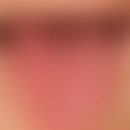DefinitionThis section has been translated automatically.
Polyene antimycotic from Streptomyces noursei.
Pharmacodynamics (Effect)This section has been translated automatically.
Complex formation with the cytoplasmic membrane of yeast fungi and the resulting change in permeability.
You might also be interested in
IndicationThis section has been translated automatically.
Candida infections.
Dosage and method of useThis section has been translated automatically.
- Systemic: 3 times/day 1 million IU p.o. for at least 2 weeks. Prophylaxis: 3 times/day 500.000 IU p.o.
- Topical: ointments/pastes/creams: apply 2-3 times/day in case of candidiasis of the skin and mucous membranes and in case of candida paronychia (see special features of topical application).
- Oral thrush: 4 times/day 2-6 ml suspension (at 0.1 million IU/ml) drop into the mouth and rinse for 10 minutes. Infants and toddlers: 1 ml 4 times/day.
- Intestinal candidosis: 3 times/day 0,5-1,5 million IU p.o. Infants: 3 times/day 0,15-0,3 million IU.
Standard concentrationThis section has been translated automatically.
100 000 IU/g in ointments, pastes and creams.
Undesirable effectsThis section has been translated automatically.
Paragroup allergy to liquid preparations, vomiting, diarrhoea.
InteractionsThis section has been translated automatically.
External use of Clotrimazole leads to a mutual reduction in efficacy.
Recipe(s)This section has been translated automatically.
PreparationsThis section has been translated automatically.
Candio-Hermal, Candio Hernal Plus (combination with fluprednides), Mykundex, Multilind healing ointment with nystatin
Note(s)This section has been translated automatically.
For external use the usual dosage of 100,000 IU/g applies. As the activity of the dried substance varies, it is more appropriate to indicate the dosage in international units (IU) rather than grams. Nystatin is sensitive to light, oxygen, heat and extreme pH values. In aqueous suspension it is particularly unstable and often has a shelf life of only 1 week at refrigerator temperature!
LiteratureThis section has been translated automatically.
- Wolf G (2007) recipe tip. dermatologist 58: 476-477




